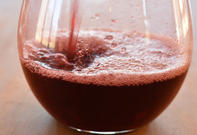Bubbles Galore
Have you ever wondered what makes wine sparkling or still? Well, today is your lucky day because what follows below are easily digestible chunks of information answering just that.

Bubbles, festive little pockets of aerated joy are a standard feature when it comes to celebratory tipple. Though some may call the bubbly ‘champagne’, it sadly is not permitted that classification.
Unless it originated from France, specifically the Champagne region, which is located east of Paris, then it certainly can be advertised as being the go-to high-end way to make a celebratory punctuation. Another noteworthy aside is that a sparkling wine made in the Champagne region is also made according to the Champagne method.
Champagne Method
The Champagne method like many memorable practices begins with a standard feature: still wine. The grapes, which are generally used to develop still wine are Chardonnay, Pinot Meunier, and Pinot Noir. Once the still wine has gone through the fermentation process and is at an optimal state it is blended according to the vineyard’s particular style.
This step is then followed by an additional fermentation process. This secondary fermentation step is what creates the bubbles in sparkling wine. It involves bottling the wine, adding a blend of sugar and yeast to each bottle and then closing it with a crown cap.
The wine filled bottles are stored sideways to facilitate the second fermentation process - this essentially allows the yeast to slowly convert the sugar into alcohol and carbon dioxide. The metal crown cap keeps the carbon dioxide from leaving the bottle which then becomes bubbles as it has nowhere to escape to.
Another byproduct of fermentation is the spent yeast cells, known as lees, which encourages the ageing phase of the champagne and permits it its distinctive aromatic taste. The lees are removed once a minimum of 15 months to a maximum of 3 years has passed. Whichever time period has been selected by the vineyard, the lees are eventually removed through a process called riddling. During this process, bottles are stored on special racks, rotated and then given a small shake to dislodge the spent yeast cells and residue in order for it to course towards the bottleneck.
Once all the leftover yeast has sufficiently collected in the bottleneck, another process called disgorgement, is initiated to remove the spent yeast through an efficient freezing application. This freezing application involved placing the neck of the bottle in a freezing solution which traps the spent yeast cells.
The crown cap is then opened, which allows the internal pressure to push the frozen spent yeast cells out. A small amount of still wine is then added to the bottle to make up for the wine that escaped due to disgorgement. After this phase is completed, a cork is inserted and a metal-wire cage to keep the cork in place so that the pressure inside the bottle does not dislodge the cork.
So in short, what this all means is that champagne works pretty hard to achieve its exclusivity and that sparkling wine produced in any other location has to either assume the catch-all term: sparklingly wine or develop a novel name all together because “champagne” is definitely taken.
Still

The mainstay in wine production and consumption tends to be still wine, which is also known as table wine. A distinguishing characteristic of still wine is that it does not contain carbon dioxide. It definitely had carbon dioxide during the fermentation process, however, this feature was removed naturally, i.e. by allowing the bubbles to escape before the final capping or corking of the bottles took place.
Not always, but certainly occasionally, bubbles will be present in still wines. These bubbles can easily be released by removing the cork or screw cap and allowing the wine to breathe. Alternatively, pouring the wine into a decanter will result in a similar bubble release, and it will make for a rather charming aesthetic.